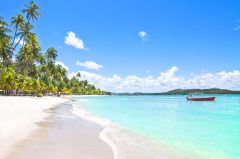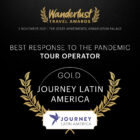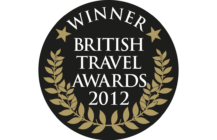Welsh Patagonia

Heard the one about the Irishman who went all the way to Argentina, met a Welsh woman, and ended up chatting to her in Spanish? That was me.
I thought we might have had a little English in common, but Clery Evans doesn't speak English: her ancestors went to Argentina to escape it.
Nearly 150 years ago, on July 28, 1865, more than 150 Welsh-speaking men, women and children landed at what is now Puerto Madryn on the Atlantic coast of Argentine Patagonia. They had sailed in May from Liverpool on the Mimosa, a converted tea clipper, with the intention of establishing a community where they could practise their language and non-conformist faith free from the influence of English and the dictates of what they saw as “English” government.
This year, their descendants are marking the anniversary — the sesquicentenario de los galeses (of the Welsh), as the roadside banners in Chubut province have it. The self-governing territory the settlers envisaged never came to pass. New arrivals from Wales dried up after the First World War, to be succeeded by migrants — many of them Italians — from southern Europe; assimilation was insisted on by the Argentine government; and the Welsh became a minority in their new homeland.
They are, though, a prosperous and visible one. Parts of Chubut province may still be a big-sky wilderness of bushes and burnt grass, but there are also chacras (farms) exporting tulips to Amsterdam, plump cherries to Marks & Spencer. The arrival of the Welsh is remembered in the name of a local bus company, its vehicles emblazoned “28 de Julio”. Their history is part of the curriculum: in a converted mill in the village of Dolavon (now an excellent restaurant), I found a coach party of schoolchildren sitting on the floor, clapping along to Lord of the Dance as a slideshow was screened of determined-looking settlers and their legacy of chapels.
Congregations may be elderly and dwindling, but the young still sign up for classes in Welsh in those chapels and their adjoining halls. Visitors, in brochures and in notices posted in hotels and restaurants, find themselves welcomed not only with bienvenido, bienvenue and wilkommen, but with croeso.
Clery Evans was welcoming, too. She's used to tourists dropping in to her home in Trevelin (Welsh for "Mill-town") to hear about her grandfather, John Daniel Evans, one of the heroes of the Welsh epic. He was returning in March 1884 with three other men from an exploratory trip into the interior when they were attacked by Mapuche Indians. His companions were killed, but he escaped — thanks, he reported, to a miraculous leap by his horse, Malacara, down a steep incline. I heard the story from Clery in a recreation of John Daniel’s home in the grounds of her own, yards away from where Malacara is buried.
I heard other tales, too, of the Welsh community past and present, from men whose very names suggest a blending of blood and culture. One was Rogelio Rhys, whose father was "the first or second Baptist minister in South America"; the other was Alejandro Jones, who earns his living as a farmer but is well known locally as a singer, composer and performer at eisteddfodau. If you travel to the fascinating place that is Welsh Patagonia, there's a good chance you'll run into both. If not, there's a well-informed man in the town of Gaiman who'll be able to tell you where to find them. He'll also tell you why, though his name is Fabio González, he is custodian of a museum dedicated to the Welsh. It's a story worth hearing.
Michael Kerr travelled with Journey Latin America to Welsh Patagonia. A former deputy travel editor of The Daily Telegraph, he still contributes to Telegraph Travel and also edits deskboundtraveller.com, which is dedicated to travel storytelling.
Tailor-made holidays
Flexible, custom-made holidays to Latin America created to match your exact requirements: our tailor-made itineraries are as unique as the clients for whom they are designed.
Design my tripPapagaio
Your edit for Latin American inspiration
Our exciting range of articles on Latin America explore everything from iconic destinations and lesser-known cultural gems to delicious traditional recipes. You’ll also find exclusive travel tips, first-hand client reviews and the chance to get your personal questions answered by our travel experts.
View Extraordinary Inspiration






































